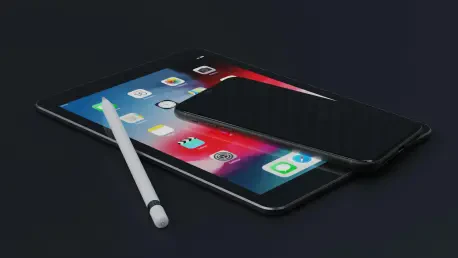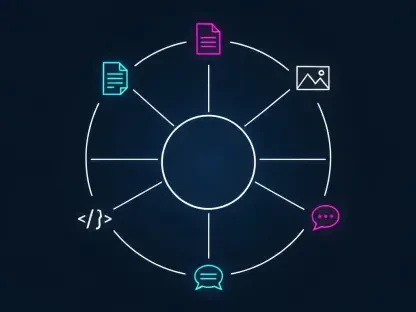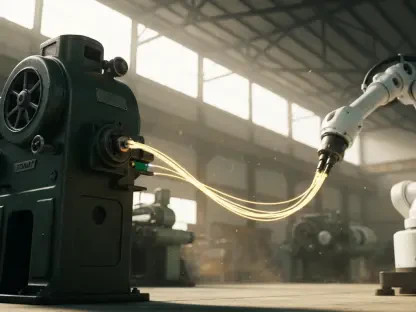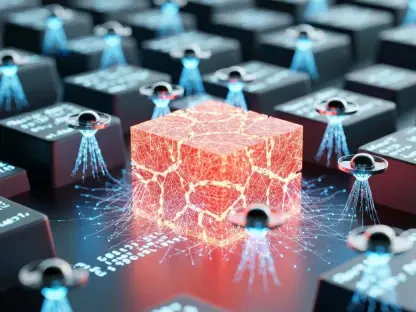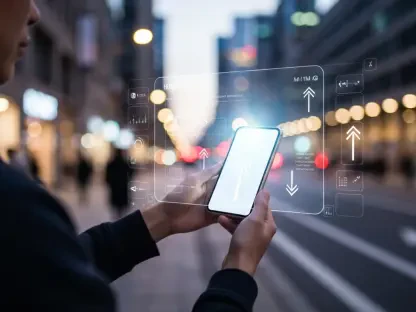The tech world watched closely as Apple unveiled macOS Tahoe 26, with its new Liquid Glass design, prompting inevitable comparisons. As the swirling debate unfolded, echoes of Microsoft’s vintage Windows Vista Aero effect surfaced, catching the attention of the industry—especially when Microsoft itself chimed in. Despite being over a decade old, the Aero interface is being revisited now, raising questions about originality in design evolution. The core of this discussion pits Apple’s contemporary Liquid Glass design against Windows Vista’s transparency-filled past, exploring whether Apple’s move is a step forward, a retro nod, or an innovative fusion of both.
The Aero Revival and Liquid Glass Paradox
A Transparent Design Connection
With macOS Tahoe 26’s introduction, Apple’s Liquid Glass interface has only grown in visibility and critique. Microsoft contributed to this dialogue with a playful jab on Instagram, showcasing Windows Vista’s Aero interface married with nostalgic tones from the era, humorously suggesting a design lineage. Transparency in OS design is not a recent development—Microsoft’s Aero effect, launched in 2007, was one of the first to bring a significant visual transformation to desktop environments, characterized by see-through windows and stunning graphical effects.
Critics argue Apple’s apparent adoption of a similar transparency theme signifies a recycling of old ideas, yet the tech ecosystem’s evolution must also be recognized. The hardware capabilities available to designers today far surpass those of Vista’s time. During the debut of Aero, users often encountered system slowdowns due to its resource demands; today, Apple’s Liquid Glass, running on advanced processors, benefits from increased stability and seamless operation, suggesting that while the design may seem familiar, the technical execution is taking a significant leap forward.
Examining Design Impacts
Beyond aesthetics, there is critical dialogue about how effective these transparent designs are in practical terms. One chief concern is accessibility—Liquid Glass’s transparency might lead to decreased clarity, impacting users’ ability to read text or recognize icons efficiently. This uncertainty raises an important debate: Does the quest for visual appeal come at a functional cost? Apple’s push for a unified design language across its platforms signifies a purposeful attempt to thread together its various operating systems aesthetically, implying that any resemblance to Aero might be a byproduct rather than an intention.
The balance between form and function remains delicate. As Apple strives to embed this new interface into its ecosystem, maintaining usability while evolving its design language becomes paramount. Despite the surface-level similarities to Aero, Apple’s design philosophy is often rooted in creating a cohesive user experience, which may suggest a more intricate approach to the process than merely repurposing an old idea. This nuanced detailing, like how light interacts with the ‘glass’ effect, indicates a potentially more advanced interpretation of transparency than was possible during Vista’s era.
Apple’s Evolving Design Language
Innovation vs. Perceived Imitation
Criticisms of Apple’s design being derivative notwithstanding, an exploration of design history illustrates how tech giants often pull inspiration from varied sources. Microsoft’s Aero was groundbreaking, heralding a new era of user interfaces coated in layers of transparency and sleek animations. Apple’s pivot to Liquid Glass in 2025 reflects a fusion of technological history and forward-thinking design. The conversation often orbits around the perceived lack of novelty, yet familiarity does not negate innovation.
Modern hardware enables Liquid Glass to go beyond mere aesthetic emulation to provide a smooth, efficient user experience. While it’s easy to label Apple’s choice as retrospective, the potential subtle enhancements and improved performance could reshape daily user interactivity. By tapping into transparency once more, Apple might aim to align its diverse platforms, promising a cohesive interface far more integrated than any past iteration.
Drawing the Line Between Influence and Innovation
The nuances between being influenced by historical aesthetic elements and delivering genuine innovation are intricate. Microsoft’s acknowledgment of its role in this design realm, even humorously, serves as a testament to the longevity and influence of its initial vision. For Apple, while the comparison stands, the potential execution promises a refined perspective, betting on a seamless blend of form and functionality that previous iterations—like Aero—struggled to provide.
Microsoft’s jocular comment reflected technology’s cyclical nature, where notions of design are revisited, reframed, and revitalized. Apple’s move might look backward but seeks forward integration, constantly shifting boundaries. Whether Liquid Glass will address criticisms concerning clarity or outstrip Aero’s legacy in functionality and innovation, time and user adoption will ultimately testify.
Future Reflections in OS Design
The tech community was abuzz as Apple introduced macOS Tahoe 26, showcasing its new Liquid Glass design. This launch naturally led to comparisons, notably to Microsoft’s older Windows Vista Aero effect. The Aero interface, known for its transparency and shimmer, resurfaces in conversations over a decade after its release, igniting discussions about design originality and evolution. This design debate became more intriguing when Microsoft joined the conversation, emphasizing the connection even further. Enthusiasts and experts began to dissect whether Apple’s Liquid Glass design is a modern advancement, a nostalgic nod to a past era, or a unique synthesis of familiar elements and contemporary aesthetics. While Apple often pioneers design trends, the echoes of Windows Vista raise curiosity about design influence cycles. Apple’s strategy with Liquid Glass might be perceived as a blend of nostalgia with hints of innovative flair, inviting a closer examination of how design traditions are reused and reinvented in tech evolution.
